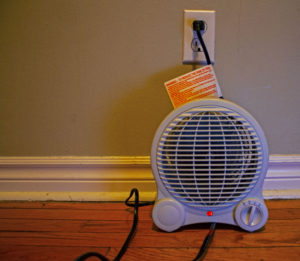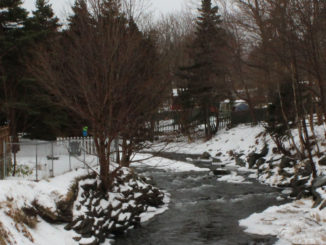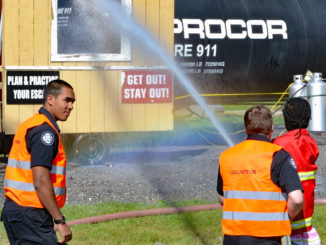With temperatures falling in St. John’s this week, people are expected to turn to extra heat sources. Fire personnel advise users to take precautions when using them.

Allan Bradbury
Kicker
Overnight Wednesday, temperatures on the northeast Avalon reached as low as -29 C with the wind chill, leading Newfoundland residents to turn to additional heating.
But some heat sources come with risk.
During colder temperatures, many people turn to secondary sources of heat in addition to their standard home heating. These may include space heaters or electric, propane or wood-burning fireplaces.
Space heaters should be only temporary measures.
“Do not use space heaters as permanent sources of heat,” said Capt.Mike Maher of the St. John’s Regional Fire Department’s Fire Prevention Division.
Around space heaters, you should also give at least three feet of space that are clear of combustible materials, he said.
“Space heaters account for 43 per cent of U.S. home heating fires,” the National Fire Prevention Association said in a 2018 report. Statistics for Canada could not be found.
Electrician Ed Budgell of E.B. Electric in St. John’s said it’s dangerous to use extension cords with space heaters.
“It’s common for people to buy the cheapest extension cords they can find, not realizing it can be dangerous,” he said.
Space heaters can draw a lot of electricity, and not all extension cords are thick enough to carry the load, which leads to overheating. The plastic on the cord can melt, and fire is a possibility, Budgell added. This is why Maher says it’s safest to plug space heaters directly into the wall.
Fireplaces and wood stoves are also very common in the older homes in and around St. John’s.
“When looking at wood stoves and fireplaces, the chimneys should be inspected and cleaned on an annual basis,” said Maher. “It’s very important to have a glass cover or a screen to prevent any flying embers from going onto any combustible surface including rugs or drapes.”
Maher also adds carbon monoxide detectors should also be present in any home where fire is being used as a source of heat, whether those be gas or wood burning.
General fire safety also encouraged
Maher said in the last 10 years, the time people have to evacuate a house in a fire has fallen from 10 minutes to two or three minutes.
“There’s a significant amount of electrical devices in the home today,” Maher said. “You have a fair number of synthetic materials and in a fire situation, all of these items would emit toxic gasses.
“A large number of fire fatalities are not burn victims; they succumb to the inhalation of carbon monoxide.”
It is important to have fire escape plans in place in the home and to practise them, Maher added. One of the simplest ways to save a life in a fire situation, according to Maher, is to ensure smoke detectors are in good working order. You should test alarms on a monthly basis and change the batteries twice a year.




Be the first to comment